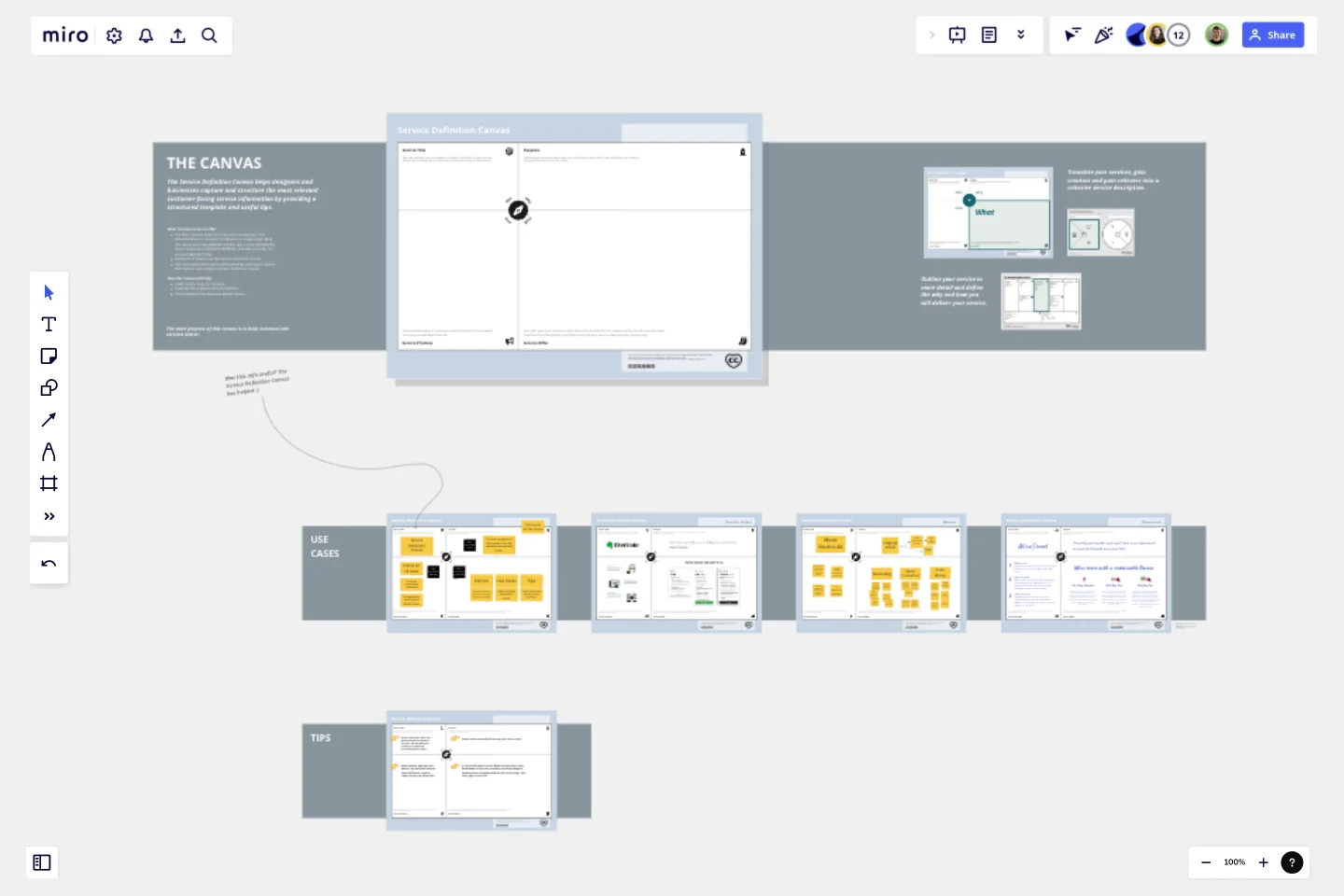Service Definition Canvas
The Service Definition Canvas helps designers and businesses capture and structure the most relevant customer-facing service information by providing a structured template and useful tips.
What this board has to offer:
The blank Service Definition Canvas for workshops, final documentation or analysis to capture on a single page:
What the service provides (SERVICE OFFER)
Why it exists (PURPOSE)
How it helps users (SERVICE PROMISE), and
Who provides the service (SERVICE TITLE).
How this canvas will help:
It will create clarity for all users
It will decrease expectation mismatches
It complements the Business Model Canvas
This template was created by Isabell Fringer.
Get started with this template right now.
Service Blueprint by Hyperact
Works best for:
Research & Design
The Service Blueprint template is perfect for visualizing the orchestration of service components. It maps out frontstage and backstage elements, helping you analyze and enhance customer experiences. Use this template to align teams, identify pain points, and streamline processes, ensuring a seamless service delivery. It's ideal for creating a shared understanding of service dynamics among stakeholders and collaborators.
Empathy Map Template by Jeshua MacDonald
Works best for:
Market Research, Research & Design
The Empathy Map template is essential for anyone looking to understand their audience better. It helps you gather insights into user thoughts and behaviors, allowing you to design more user-centered products and services. Perfect for UX designers and marketers.
Vision Storyboard Or Narrative
Works best for:
Storyboard, Planning, Design
Craft compelling narratives with the Vision Storyboard or Narrative template. This versatile tool is perfect for developing vision statements, strategic narratives, or creative stories. It helps you outline key elements, plot progression, and visual themes, ensuring a coherent and impactful story. Use this template to align your team on the narrative vision and create a compelling storyline that resonates with your audience and stakeholders.
Flyer Maker Template
Works best for:
Design, Marketing
Whether it’s a client party or a nonprofit fundraiser, your event needs one key thing to be a smashing success: people to show up. That’s why promoting it is such an important part of the planning—and creating and sending a flyer is the first step. These single-page files will grab your guests’ attention and give them the key details, such as the time, date, and location (and if it’s a fundraiser, who/what the funds will benefit). This template will let you lay out text and customize a flyer design.
Service Blueprint Template
Works best for:
Desk Research, Operations, Market Research
The Service Blueprint template is a visual tool for designing and optimizing service experiences. It provides a structured framework for mapping customer journeys, identifying touchpoints, and aligning internal processes. This template enables teams to visualize the entire service ecosystem, uncover pain points, and innovate solutions to enhance customer satisfaction. By promoting customer-centricity and collaboration, the Service Blueprint empowers organizations to deliver exceptional service experiences and drive sustainable growth.
Empathy Mapping by Atlassian
Works best for:
Market Research, Research & Design
Atlassian Empathy Mapping is designed to help teams understand user perspectives. By mapping out user experiences, you can identify pain points and opportunities for improvement. This template is ideal for collaborative workshops and user research.
